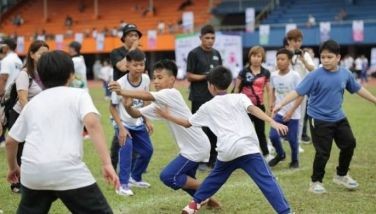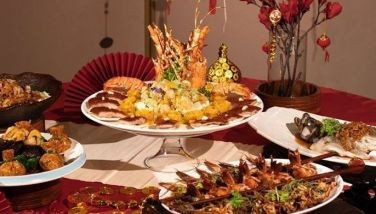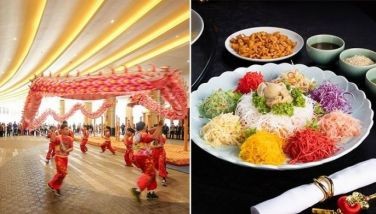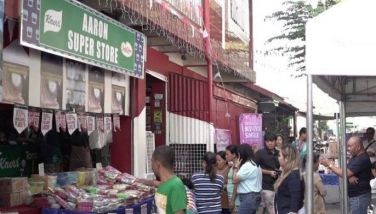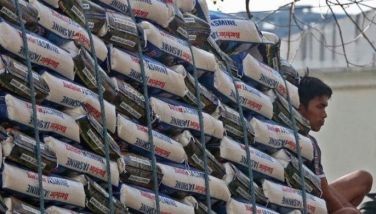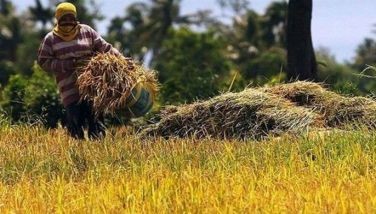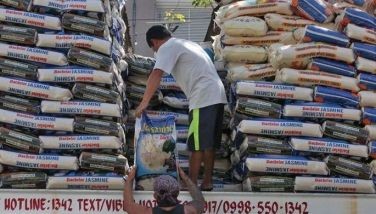Firm needed to market ‘bagoong’ cubes
February 4, 2007 | 12:00am
Wanted: someone to market the ‘bagoong cubes’ developed by a researcher of a state university.
The novelty product was developed by Dr. Carmencita L. Culasing of the Cagayan State University-College of Fisheries and Marine Sciences (CSU-CFMS) situated in Aparri, Cagayan. CSU is a multi-campus university in Cagayan whose seat of administration is the main campus in Tuguegarao town.
Dr. Culasing’s bagoong cubes won the second prize in the Aquatic Technology Competition and Marketplace (ATCOM) held last Jan. 31 under the sponsorship of Los Baños-based DOST-PCAMRRD.
For the feat, the CSU scientist received P50,000 and a trophy.
Bagoong cubes are dried products derived from traditional fish paste. It is prepared by separating the flesh from the bones of a fermented fish, then dried, and the flesh ground before it is formed into cubes.
The bagoong sold in the market is usually packed in bottles with little solid, which is very messy to handle and even very heavy. Filipinos fond of eating this product have problems in transporting them.
The research addressed this problem.
Dr. Culasing conducted three studies.
The first aimed to determine the best fish species for bagoong cubes; the second looked into the optimum fermentation period for bagoong cubes making, and the third concentrated on the effect of antioxidant on the sensory qualities of bagoong cubes.
Study 1 showed that hairtail (espada) was the raw material fish species for bagoong cube making preferred by the research’s laboratory panelist because of the color; it gives a lighter brown color.
However, in terms of the general acceptability test, all the species used (hairtail, marine anchovies, freshwater anchovies, and round scad) were acceptable.
In terms of return of investment (ROI), a fleshy fish like round scad (galunggong) is more acceptable for making bagoong cubes.
Study 2 showed that four to five months fermentation period gave the best sensory characteristics of bagoong cubes – four months for smaller fish and five months for bigger fish.
Study 3 showed that the addition of antioxidants improved the quality of bagoong cubes, especially the odor of the finished product. – RAF
The novelty product was developed by Dr. Carmencita L. Culasing of the Cagayan State University-College of Fisheries and Marine Sciences (CSU-CFMS) situated in Aparri, Cagayan. CSU is a multi-campus university in Cagayan whose seat of administration is the main campus in Tuguegarao town.
Dr. Culasing’s bagoong cubes won the second prize in the Aquatic Technology Competition and Marketplace (ATCOM) held last Jan. 31 under the sponsorship of Los Baños-based DOST-PCAMRRD.
For the feat, the CSU scientist received P50,000 and a trophy.
Bagoong cubes are dried products derived from traditional fish paste. It is prepared by separating the flesh from the bones of a fermented fish, then dried, and the flesh ground before it is formed into cubes.
The bagoong sold in the market is usually packed in bottles with little solid, which is very messy to handle and even very heavy. Filipinos fond of eating this product have problems in transporting them.
The research addressed this problem.
Dr. Culasing conducted three studies.
The first aimed to determine the best fish species for bagoong cubes; the second looked into the optimum fermentation period for bagoong cubes making, and the third concentrated on the effect of antioxidant on the sensory qualities of bagoong cubes.
Study 1 showed that hairtail (espada) was the raw material fish species for bagoong cube making preferred by the research’s laboratory panelist because of the color; it gives a lighter brown color.
However, in terms of the general acceptability test, all the species used (hairtail, marine anchovies, freshwater anchovies, and round scad) were acceptable.
In terms of return of investment (ROI), a fleshy fish like round scad (galunggong) is more acceptable for making bagoong cubes.
Study 2 showed that four to five months fermentation period gave the best sensory characteristics of bagoong cubes – four months for smaller fish and five months for bigger fish.
Study 3 showed that the addition of antioxidants improved the quality of bagoong cubes, especially the odor of the finished product. – RAF
BrandSpace Articles
<
>
- Latest
Latest
Latest
May 14, 2024 - 3:43pm
By Ian Laqui | May 14, 2024 - 3:43pm
April 10, 2024 - 5:12pm
By Ian Laqui | April 10, 2024 - 5:12pm
March 4, 2024 - 3:32pm
By Ian Laqui | March 4, 2024 - 3:32pm
March 4, 2024 - 2:12pm
By Kristine Daguno-Bersamina | March 4, 2024 - 2:12pm
February 17, 2024 - 2:31pm
February 17, 2024 - 2:31pm
Recommended
January 21, 2025 - 12:00am







